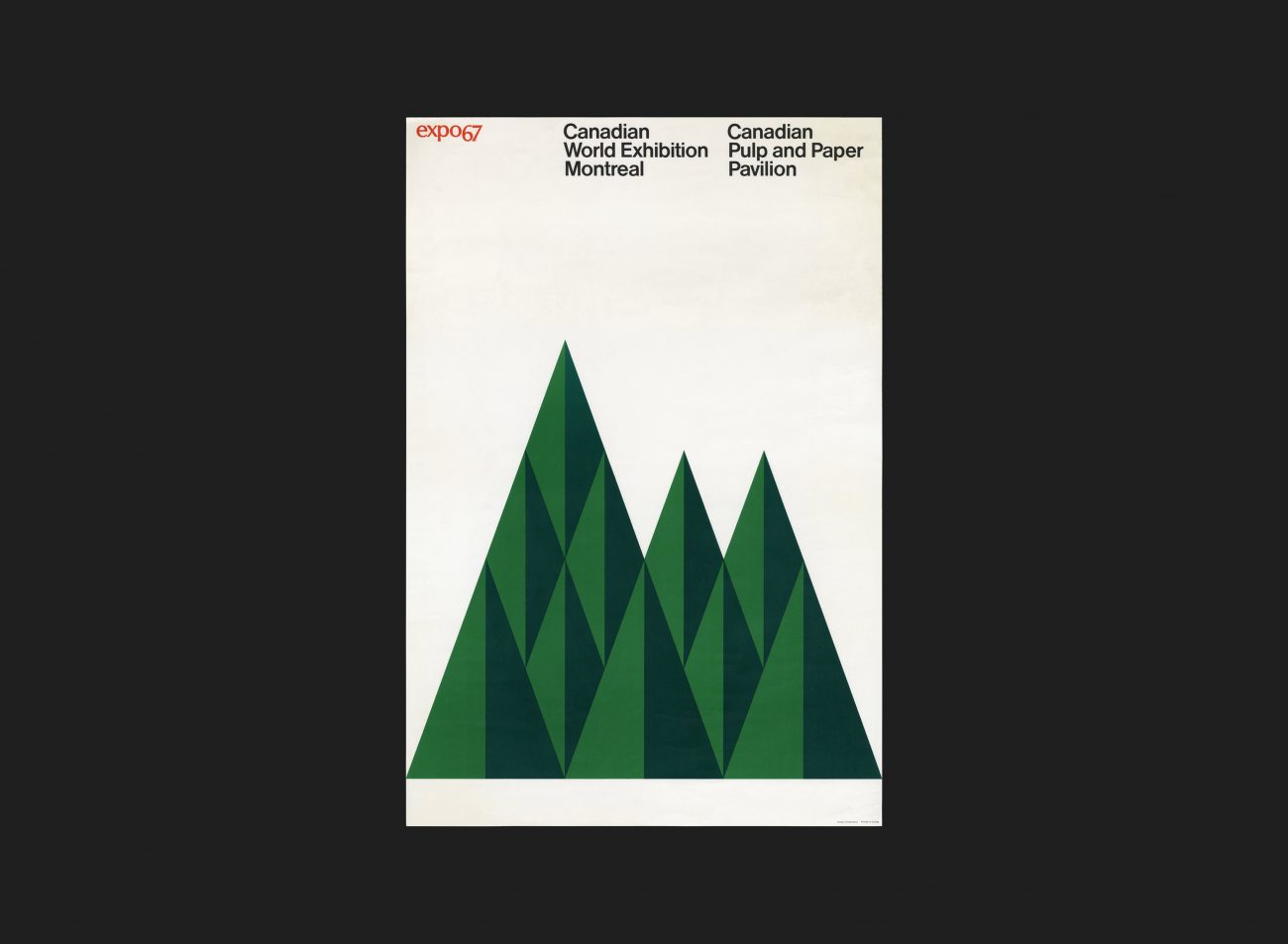Comment
One of Expo 67’s objectives was to tell the story of our exploration of the physical world and the drive we have to discover, understand, and create. There were only two industry-sponsored pavilions represented at Expo 67: the Steel Pavilion, and the Pulp and Paper Pavilion. The Pulp and Paper Pavilion became the voice for paper industry in Canada, and was sponsored by the Canadian Pulp & Paper Association (CPPA). The roof line of the Pulp and Paper Pavilion was designed to resemble a forest and was dedicated to the Canada’s rich natural resource of forestry and their derived products. Paper, for which the forests produce raw material, was the principal tool we used to record our thoughts and to get our communications. And this became the primary theme of the Canadian Pulp and Paper Pavilion, in which the tallest trees are as high as an eight story building.
Visitors to the pavilion were allowed to enter into a dedicated theatre where they were exposed to the history of papermaking in Canada. The walls of this theatre were designed to suggest an unrolling roll of paper. The impact of the pulp and paper industry on the Canadian economy was the primary theme.
The designer behind the pavilion itself was William Kissiloff of Kissiloff & Wimmershoff, a design firm based in New York. Recalling his motivations for the design, he said: “I wanted to create a building that evoked a simple emotional response, a certain type of relationship with nature, which the industry obviously had and was proud of. The structure was located close to the two giants of the time, the Soviet Union pavilion and the Buckminster Fuller’s geodesic dome housing the US, so we had to compete with our own uniqueness. I always felt that the pulp and paper pavilion’s trees succeeded in standing out between these two giant pavilions,” said Kissiloff.
Ernst Roch’s poster for the pavilion takes the purest, geometric expression of the roofs themselves, whilst simultaneously taking cues from the Canadian forests which provide the wood pulp used to manufacture paper. The roofs were made up of of 16′ modular grid, covered by 50 pyramidal elements of equal base size (16′ X16′) and different heights (20′, 30′, 40′ or 60′), and the poster masterfully reinforces the mathematics behind them.
All Archives
Go Back










